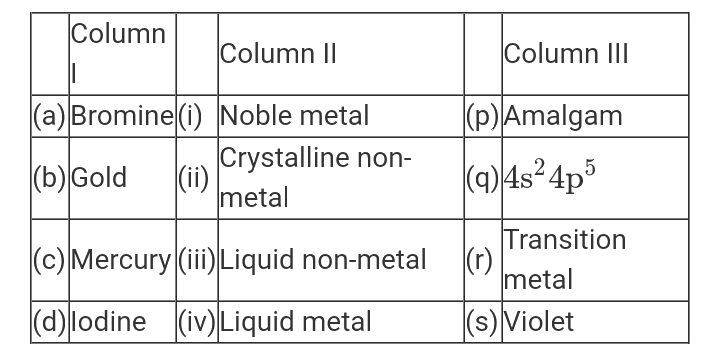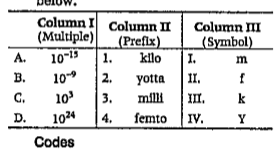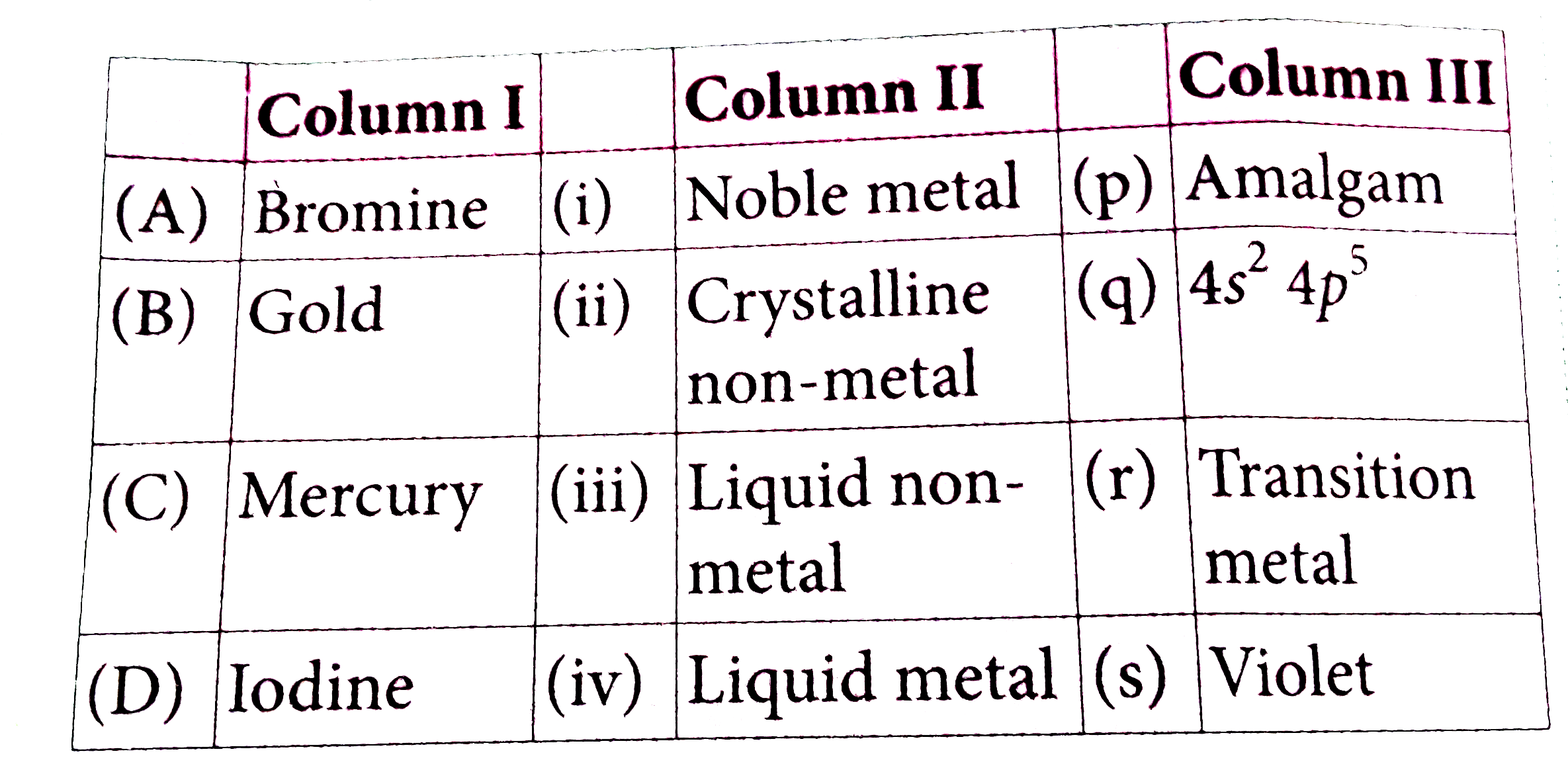Acidified potassium dichromate oxidises
I. iodides to iodine
II.sulphides to sulphur
III. Tin (IV)to tin (II)
The appropriate option with correct choices are
Only I
II and III
I and III
I and II
The correct Answer is:D
To solve the question regarding the oxidation reactions involving acidified potassium dichromate, we will analyze each statement provided in the question step by step.
Step 1: Understand the role of acidified potassium dichromate
Acidified potassium dichromate (K2Cr2O7 in acidic medium) is a strong oxidizing agent. It can oxidize certain substances, and we need to identify which of the given substances are oxidized by it.
Step 2: Analyze the first statement: "Iodides to iodine"
Iodides (I⁻) can be oxidized to iodine (I2) by potassium dichromate. The oxidation reaction can be represented as:
2I−→I2+2e−
This statement is correct.
Step 3: Analyze the second statement: "Sulphides to sulphur"
Sulphides (like H2S) can also be oxidized by potassium dichromate to form elemental sulfur (S). The reaction can be represented as:
H2S→S+2H++2e−
This statement is also correct.
Step 4: Analyze the third statement: "Tin (IV) to tin (II)"
Tin (IV) (Sn⁴⁺) being reduced to tin (II) (Sn²⁺) indicates a reduction process, not oxidation. The reaction can be represented as:
Sn4++2e−→Sn2+
Since this is a reduction process, this statement is incorrect.
Step 5: Conclusion
Based on the analysis:
- Statement I (iodides to iodine) is correct.
- Statement II (sulphides to sulphur) is correct.
- Statement III (tin (IV) to tin (II)) is incorrect.
Thus, the appropriate option with the correct choices is the one that includes the first two statements but not the third.
Final Answer
The correct answer is Option 4 (I and II are correct).
---
Acidified potassium dichromate (K2Cr2O7 in acidic medium) is a strong oxidizing agent. It can oxidize certain substances, and we need to identify which of the given substances are oxidized by it.
Iodides (I⁻) can be oxidized to iodine (I2) by potassium dichromate. The oxidation reaction can be represented as:
2I−→I2+2e−
This statement is correct.
Sulphides (like H2S) can also be oxidized by potassium dichromate to form elemental sulfur (S). The reaction can be represented as:
H2S→S+2H++2e−
This statement is also correct.
Tin (IV) (Sn⁴⁺) being reduced to tin (II) (Sn²⁺) indicates a reduction process, not oxidation. The reaction can be represented as:
Sn4++2e−→Sn2+
Since this is a reduction process, this statement is incorrect.
Based on the analysis:
- Statement I (iodides to iodine) is correct.
- Statement II (sulphides to sulphur) is correct.
- Statement III (tin (IV) to tin (II)) is incorrect.
The correct answer is Option 4 (I and II are correct).
Similar Questions
Knowledge Check
- Question 1 - Select One
Alcohols are classified as
I.monohydric
II. dihydric
III.trihydric
IV.polyhydric
Select an appropriate option with correct choices.AI and IIBII and IIICIII, IV and IDAll of the above - Question 2 - Select One
Alcohols are classified as
I.monohydric
II. dihydric
III.trihydric
IV.polyhydric
Select an appropriate option with correct choices.AI and IIBII and IIICIII, IV and IDAll of these - Question 3 - Select One
Acidified potassium dichromate reacts with potassium iodide and oxidiese it to I2. What is the oxidation state of chromium in the products of the reaction?
A+4B+6C+3D+2
Match the columns I, II and III and mark the appropriate choice.
 View Solution
View SolutionSolubility depends upon
I. the nature of solute and solvent
II. temperature
III. pressure
The option with all correct choice isView SolutionMatch the items of columns I,II and III appropriately and choose the correct option from the codes given below.
 View Solution
View SolutionProphase of meiosis includes
I. Leptotene
II. Pachytene
III. Cytokinesis
IV. Karyokinesis
Choose the option with correct statement(s).View SolutionSedentary filter feeding molluscs are
I.oyster II.pecten
III.mussels IV. Chaetoderma
Choose the option with correct codes .View Solution


